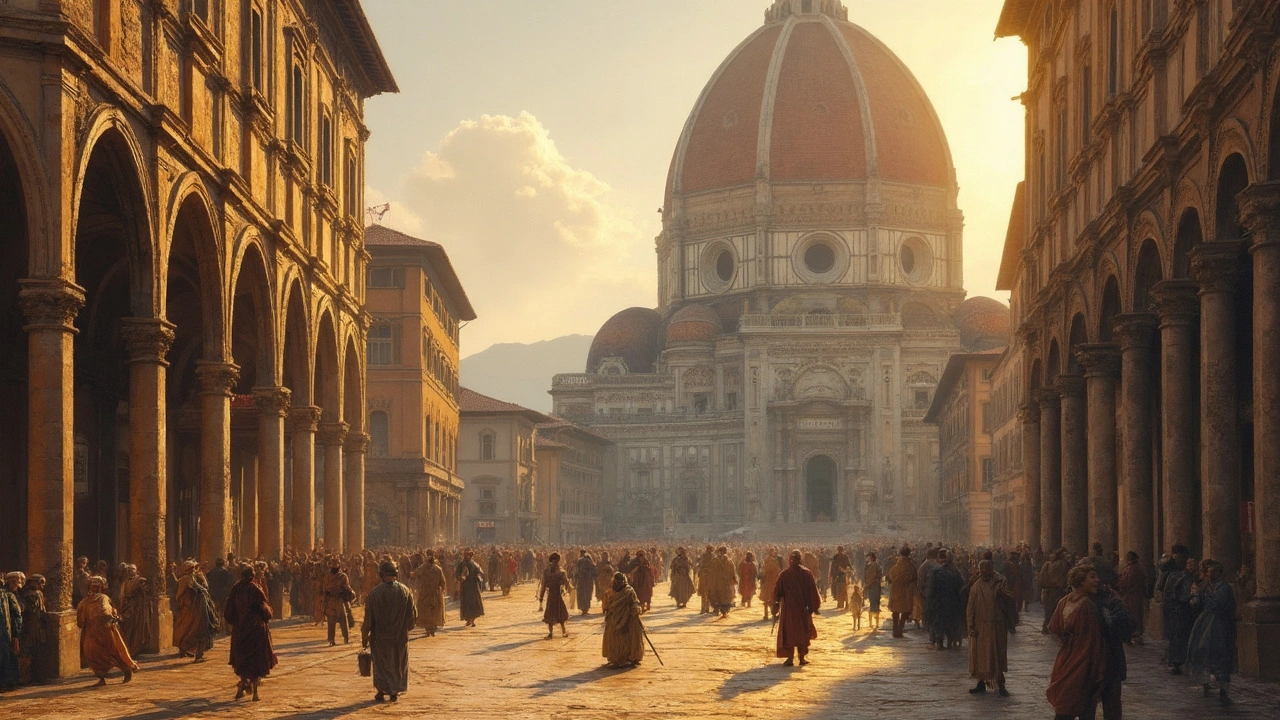Explore the fascinating world of Renaissance architecture, from the domes of Florence to the columns of Rome. Discover artists, design secrets, and why this era still shapes our cities.
Florence Duomo: Santa Maria del Fiore and Brunelleschi’s Dome
The Florence Duomo stops people in their tracks. Its red-tiled dome was the biggest brick dome in the world for centuries and still looks impossible from the street. If you want a quick win on history and great photos, this is where to start.
What makes the Duomo special
Built as Santa Maria del Fiore, the cathedral blends Gothic form with Renaissance engineering. Filippo Brunelleschi finished the dome between 1420 and 1436 using a double-shell design and a clever brick pattern—no full wooden support (centering) needed. The dome spans about 45.5 meters across and the top reaches roughly 114.5 meters above ground. Around it you’ll notice the polychrome marble facade and the Baptistery’s famous bronze doors by Ghiberti.
Inside, the dome’s inner surface is covered by a dramatic Last Judgment fresco by Giorgio Vasari and Federico Zuccari. Nearby, Giotto’s bell tower provides another angle on the whole complex—each element tells a piece of Florence’s story from medieval civic pride to Renaissance invention.
Practical tips for visiting
Want the best visit without wasting time? Book a dome ticket online in advance. The climb to the top is 463 narrow steps—no elevator—so wear comfortable shoes and go early to avoid crowds and heat. If you’re afraid of tight spaces or stairs, the climb isn’t for you; you can still admire the dome from below and get great views from Piazzale Michelangelo or the bell tower.
Buy a combined ticket if you plan to see the Opera del Duomo Museum, the Baptistery, and Giotto’s Campanile. The museum has original sculptures and models that explain how the dome was built—helpful context before you climb. Allow at least two hours for the full complex and more if you want photos and time to linger.
Photography tips: shoot the facade early morning for soft light and fewer people. For a striking dome shot, go to the bridge across the Arno near the ponte alle Grazie at sunset. Inside the cathedral, use a wide lens for the dome’s fresco—watch for changing light from stained glass.
Want to learn more? Read our pieces on Renaissance architecture, Brunelleschi’s techniques, and Florence’s art history to deepen what you see. The Duomo is more than a landmark—it’s a case study in how design, math, and ambition shaped a city.
Planning a trip or just curious? Use this guide to pick what to see first, book smart, and get the most from your visit to one of Italy’s most famous church complexes.

